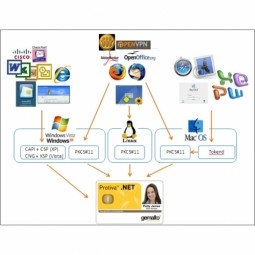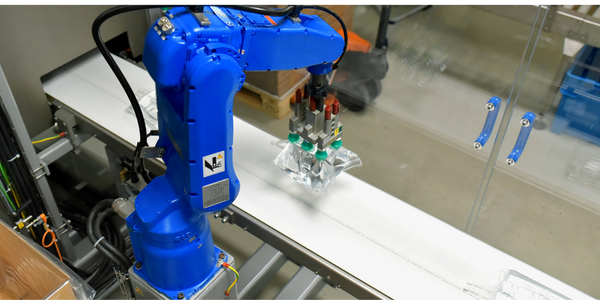Technology Category
- Functional Applications - Computerized Maintenance Management Systems (CMMS)
- Functional Applications - Enterprise Asset Management Systems (EAM)
Applicable Industries
- Life Sciences
Applicable Functions
- Maintenance
Use Cases
- Asset Lifecycle Management
- Real-Time Location System (RTLS)
About The Customer
The customer is a life sciences startup experiencing rapid growth. The company has recently expanded its team, hiring a significant number of staff across various departments, including IT, QA, and facilities. The organization was heavily reliant on manual processes for asset management, with all asset information logged in spreadsheets and stored across multiple systems. They were seeking a more efficient, scalable solution to manage their assets, including vendor and asset performance reports, vendor certifications, and asset tracking. The company was also looking for a full cloud-based solution that would meet both GxP and 21 CFR Part 11 requirements.
The Challenge
A rapidly growing life sciences startup was struggling with its asset management processes. The company had recently hired a significant number of staff across various departments, including IT, QA, and facilities, and needed to scale its processes to match its expanding team. The organization was seeking an improved method for handling vendor and asset performance reports, vendor certifications, and asset tracking. The existing system was entirely manual, with all asset information logged in spreadsheets and stored across multiple systems. This made it difficult to locate key information quickly and efficiently. The organization was in need of a more streamlined process for managing its assets, including a more efficient way to enter information such as asset name, plate, model, and vendor certifications. Additionally, they were looking for a full cloud-based solution.
The Solution
After evaluating several integrated workplace management systems (IWMS) and computerized maintenance management system (CMMS) options, the startup chose the Nuvolo Connected Workplace. This solution offered a unified, user-friendly approach to connecting information and processes across departments. It was specifically designed for life sciences companies, meeting both GxP and 21 CFR Part 11 requirements. All equipment and asset records were saved on a single platform, enabling users to view and pull any activity associated with an audit request, including onboarding, maintenance and calibration, usage, and retirement. The team implemented the small to medium-sized business (SMB) offering, which required minimal configuration and setup. Nuvolo hosted the software instance, eliminating the need for the organization to worry about infrastructure or maintenance costs. The SMB solution also offered the flexibility to upgrade to the full Connected Workplace platform in the future, including the OT Security solution for securing operational technology and the Projects solution for capital project management.
Operational Impact

Case Study missing?
Start adding your own!
Register with your work email and create a new case study profile for your business.
Related Case Studies.

Case Study
Corporate Identity Solution Adds Convenience to Beckman Coulter
Beckman Coulter wanted to implement a single factor solution for physical and remote logical access to corporate network. Bechman Coulter's users were carrying smart card badges for doors, but also needed a one-time password token to access to our corporate network when they were not in the office. They wanted to simplify the process.

Case Study
Embracing Business Success in Real Time
· Increase control over growing Big Data to improve business decisions · Manage data for 28,000 biotechnology stockkeeping units in the fields of microbiology, molecular biology, animal cell cultures, plant tissue cultures, and lab ware for laboratory chemicals · Accelerate report generation and analysis with real-time data

Case Study
Flow Robotics: Scaling Up Production and Accelerating Product Development with IoT
Flow Robotics, a Danish manufacturer, developed flowbot™ ONE pipetting robots to alleviate the strain on bioanalysts in life-science laboratories and hospitals across Europe. These robots were designed to automate part of the testing process, speeding up the time it takes to produce results and reducing pressure on staff. However, the company faced challenges in scaling up production and accelerating product development. High workloads and physically challenging conditions have long been an issue for laboratory professionals. Flow Robotics estimates that around half of medical lab technicians carry out the same arm movements for at least a quarter of their working day. The American Society for Clinical Pathology reported that 85% of laboratory professionals feel burnt out; 36% struggle with inadequate staffing; and 32% face a heavy workload and pressure to complete all testing on time.
Case Study
Material Intelligence at Ethicon: Sustaining Medical Device Manufacturability and Improving Patient Care
Ethicon, a world-class medical devices company, faced several challenges in its operations. The rapid selection of manufacturing materials compliant in global markets was critical to assure patients, practitioners, and purchasing organizations of the biocompatibility of their medical devices. Ensuring supply chain continuity and minimizing risks of obsolescence for medical devices due to regulatory changes were also crucial in meeting Ethicon’s ongoing commitment to maintaining patient care. Furthermore, the engineers at Ethicon were developing the next generation of medical devices and needed to access historical material data to accelerate new product development. The process of centralizing and digitalizing its materials information was a significant challenge that Ethicon needed to overcome.

Case Study
Revolutionizing Aerospace Industry with 3D Printing: A 63% Lighter Titanium Part
GE Aviation, a renowned name in the aerospace industry, recognized the potential of 3D printing technology in transforming the sector. The primary challenge was to reduce the weight of the aerospace parts, which would directly impact the fuel costs. A lighter airplane would mean lower fuel consumption, leading to cost savings and a smaller carbon footprint. However, achieving this weight reduction without compromising the strength and functionality of the parts was a significant challenge. Traditional manufacturing methods were not able to provide the desired weight reduction while maintaining the required stiffness and strength of the parts. The challenge was to find a solution that could create strong, light, and functional aerospace parts.
Case Study
IWT's Transformation: Customizing with Efficiency in IoT
IWT, a company specializing in the design, manufacture, and installation of washing systems for the life sciences and pharmaceutical industries, faced a significant challenge in managing its wide product portfolio. The company manufactures 45 different models, 60% of which are customized to some degree. This high level of customization, combined with limited production quantities, necessitated a controlled process for managing the release of engineering changes. The goal was to achieve efficiency, reduce process time, and better coordinate production throughout the organization. The need for strict compliance in heavily regulated industries further complicated the situation. IWT's existing PLM journey with Dassault Systèmes’ SOLIDWORKS for 3D CAD and Enovia for managing CAD data and Bills of Materials (BOMs) was proving inadequate. The system had limited part classification, no workflow, and no tool to ensure data consistency. The management of non-CAD documents was also a challenge, with information often difficult to find and access.







